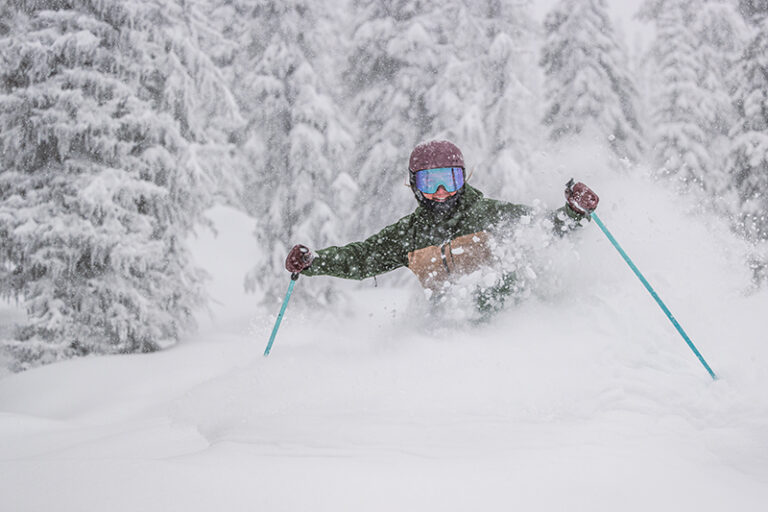- Snowshoes: Any store that sells snowshoes should be able to find a pair that works for you. The basic rule is you want a bigger snowshoe if the snowshoe is handling more weight, since a larger surface area creates more float. You will also need a bigger snowshoe for walking in fresh powder than if you are walking on a snowmobile track. Consider renting or borrowing until you find a style that you enjoy.
- Poles: Any type of pole will generally do, but make sure they have powder baskets at the tips to create a little more stability. You don’t need poles to snowshoe, but many people find they provide more balance.
- Boots: Most waterproof hiking boots should work well. If you plan on long, epic snowshoeing trips, you might consider looking at winter-specific hiking boots that are warmer, offer a little more support, and are less likely to create blisters.
- Backpack: Any small backpack will do. Use this to carry everything else you bring, including water, food, a headlamp, extra layers for when you work up a sweat, and other essentials you should always carry in the backcountry.
- Map: If you don’t know the area, print out a map and have an app on your phone that can show you the surrounding area and where to go. Always have a plan and share that plan with someone back home.
- Food: Carry a couple of snacks for a quick pick-me-up after an hour or more of exertion.
- Water: Carry at least one quarter of water. Consider a water bottle instead of the hydration bladder since tubes tend to freeze quickly.
- Headlamp: It gets dark early. Also, remember to carry extra batteries.
- Clothing: The biggest mistake beginners often make is wearing too much clothing, which means that dressing in layers is important. Always check the forecast before you go and take precipitation and temperature into consideration. Generally, start with wool or synthetic socks, thin thermal tops and bottoms, and synthetic pants. Depending on the weather, wear a fleece, puffy, or wool sweater and a breathable rain jacket. The idea is to wear thinner layers that are easy to take on and off and store in your backpack as needed. Take layers off before you start to sweat and put layers on soon after you stop moving in order to trap your body heat and stay warm. The sun can be powerful in the winter, so bring your sunglasses, sunscreen, and a cap to protect your face. Always bring gloves and a warm hat. Also, you get extra style points if you have a colorful hat and scarf duo! // (Sandra Townsend)
Sandra Townsend is currently training for future mountaineering objectives around the Pacific Northwest. She wrote about ski tuning in December.













